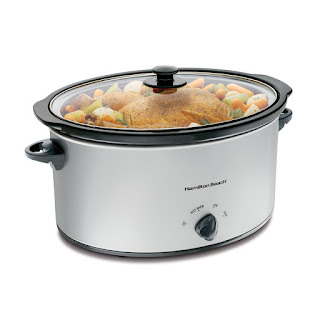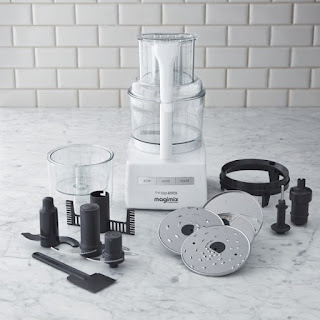Slow Cooker: What A Mistake!
4 Things to Know Before Making Slow-Cooker Recipes
After developing countless slow-cooker recipes in our test kitchen, we have learned a thing or
Two about making the most of this appliance.
Despite all the testing we have done to make our recipes foolproof, with a slow cooker isn't an
Specific science; the matter is that heating power varies tremendously among brands of slow
cookers. So as you are after our recipes, here are a few things you will need to know.
Use the Time Ranges
Generally, for our recipes we provide either 1- or 2-hour ranges (and a wide array of cooking
Times) as guidelines for how long a recipe ought to be cooked. More delicate and exacting
Recipes with fish and leaner cuts of meat have the shorter time range (and shorter cooking
Times); we discovered this narrower range to be more reliable. We recommend that the first time
You make one of those recipes that you check for doneness at t
he lower end of the range.
Get to Know Your Slow Cooker
While all ovens set to 350 degrees will perform the same (assuming all the ovens are correctly
Calibrated--oven thermometers are the easiest way to track this), temperatures vary widely
We tested more than a dozen models and prepared every recipe in 2
Different models. Some versions run hot and fast, while some heat more slowly and softly.
Most models perform best on low, but it's hard to make blanket statements which apply to
all slow cookers. In our testing, we have found that some slow cookers run hot or cool on only
One of those configurations (either low or high). If
You've been using a slow cooker for some time, ask yourself if recipes are generally done at
the low or high end of the cooking times provided in recipes. The answer should tell you
Whether you've got a "fast" slow cooker or a "slow" model. If you are just getting started with
Your slow cooker, assess all recipes at the beginning of the time range, but allow some extra
Time to cook food longer if necessary.
Row of Slow Cookers
Slow cookers come in a variety of sizes, from the ridiculously small (1 quart) to the very big (7
Generally speaking, we enjoy 6-quart models. That said, we tested our recipes in slow
Cookers of different sizes. Each recipe includes the size range that will work for that particular
Recipe, though the vast majority of the recipes utilize 4- to 7-quart slow cookers. Note that
Some recipes must be made in a large slow cooker (at least 5 1/2 quarts) or you run the risk of
The shape of the slow cooker also issues for some of our recipes: Oval
Slow cookers are needed to accommodate some roasts, casseroles, and braised vegetable
Dishes--they simply won't fit in a round slow cooker. If you don't understand the size of your slow
Cooker, check the underside of the insert (where the size is usually stamped), or just
Measure how much water it takes to fill the insert to just above the lip.
Keep Food Safe
With a slow cooker is a secure way to cook meals, but there are few things to keep in mind to
Ensure it's a safe process:
First, ensure your slow cooker along with your utensils have been properly cleaned.
Do not let your meat or fish sit out on the counter for any length of time before adding them to
the slow cooker.
Never put frozen food into your toaster because this greatly increases the risk that your food will
Not reach a safe bacteria-killing temperature.
You should also follow our guidelines in recipes where we specify the doneness temperature of
Fish, poultry, or poultry. It's advisable to keep the slow-cooker lid in place as this traps the heat
And helps the slow cooker reach the perfect temperature zone.
After developing countless slow-cooker recipes in our test kitchen, we have learned a thing or
Two about making the most of this appliance.
Despite all the testing we have done to make our recipes foolproof, with a slow cooker isn't an
Specific science; the matter is that heating power varies tremendously among brands of slow
cookers. So as you are after our recipes, here are a few things you will need to know.
Use the Time Ranges
Generally, for our recipes we provide either 1- or 2-hour ranges (and a wide array of cooking
Times) as guidelines for how long a recipe ought to be cooked. More delicate and exacting
Recipes with fish and leaner cuts of meat have the shorter time range (and shorter cooking
Times); we discovered this narrower range to be more reliable. We recommend that the first time
You make one of those recipes that you check for doneness at t
he lower end of the range.
Get to Know Your Slow Cooker
While all ovens set to 350 degrees will perform the same (assuming all the ovens are correctly
Calibrated--oven thermometers are the easiest way to track this), temperatures vary widely
We tested more than a dozen models and prepared every recipe in 2
Different models. Some versions run hot and fast, while some heat more slowly and softly.
Most models perform best on low, but it's hard to make blanket statements which apply to
all slow cookers. In our testing, we have found that some slow cookers run hot or cool on only
One of those configurations (either low or high). If
You've been using a slow cooker for some time, ask yourself if recipes are generally done at
the low or high end of the cooking times provided in recipes. The answer should tell you
Whether you've got a "fast" slow cooker or a "slow" model. If you are just getting started with
Your slow cooker, assess all recipes at the beginning of the time range, but allow some extra
Time to cook food longer if necessary.
Row of Slow Cookers
Slow cookers come in a variety of sizes, from the ridiculously small (1 quart) to the very big (7
Generally speaking, we enjoy 6-quart models. That said, we tested our recipes in slow
Cookers of different sizes. Each recipe includes the size range that will work for that particular
Recipe, though the vast majority of the recipes utilize 4- to 7-quart slow cookers. Note that
Some recipes must be made in a large slow cooker (at least 5 1/2 quarts) or you run the risk of
The shape of the slow cooker also issues for some of our recipes: Oval
Slow cookers are needed to accommodate some roasts, casseroles, and braised vegetable
Dishes--they simply won't fit in a round slow cooker. If you don't understand the size of your slow
Cooker, check the underside of the insert (where the size is usually stamped), or just
Measure how much water it takes to fill the insert to just above the lip.
Keep Food Safe
With a slow cooker is a secure way to cook meals, but there are few things to keep in mind to
Ensure it's a safe process:
First, ensure your slow cooker along with your utensils have been properly cleaned.
Do not let your meat or fish sit out on the counter for any length of time before adding them to
the slow cooker.
Never put frozen food into your toaster because this greatly increases the risk that your food will
Not reach a safe bacteria-killing temperature.
You should also follow our guidelines in recipes where we specify the doneness temperature of
Fish, poultry, or poultry. It's advisable to keep the slow-cooker lid in place as this traps the heat
And helps the slow cooker reach the perfect temperature zone.


Comments
Post a Comment